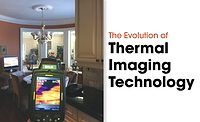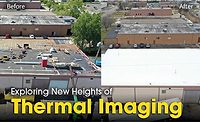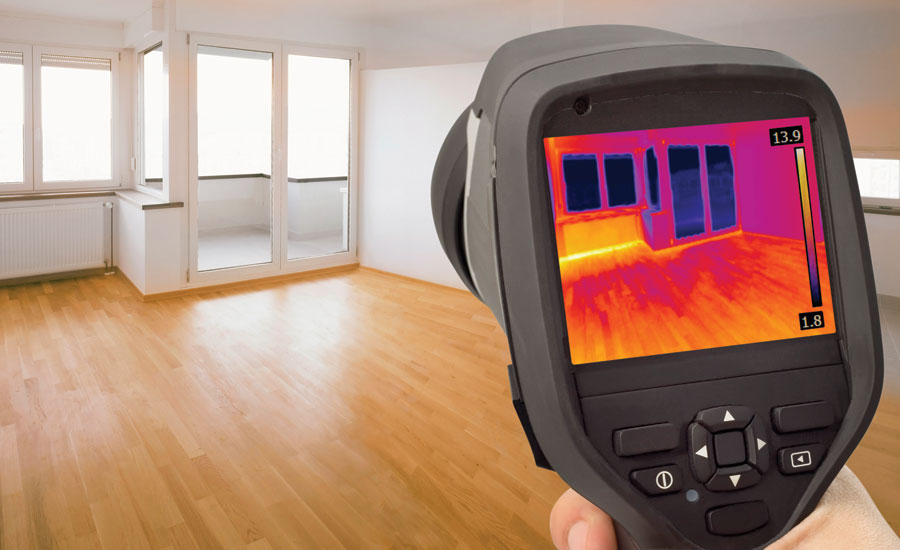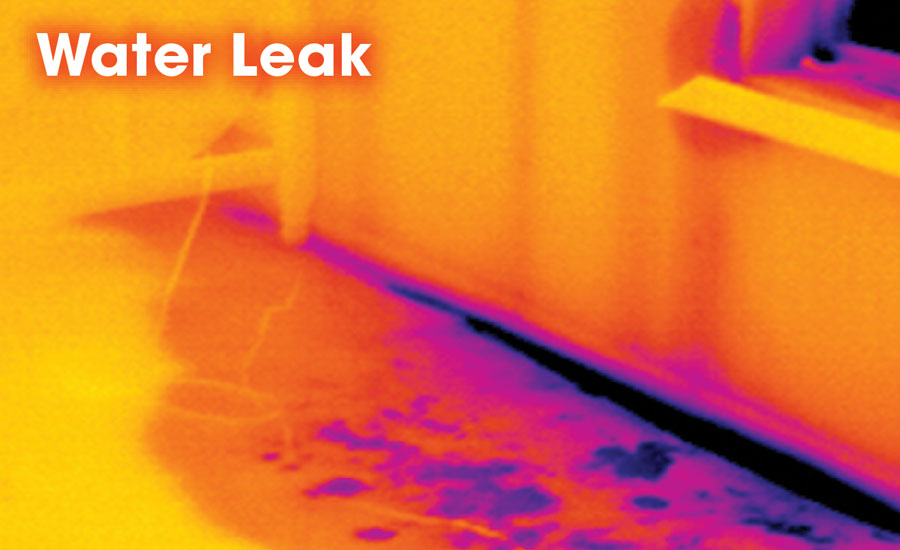Myths & Possibilities with Thermal Imaging Technology






















Thermal imaging cameras can be a very helpful tool during water damage remediation work. However, the key is knowing what you’re seeing, and how infrared technology works. Experts say it’s really not much different than a regular camera on your smart phone, or a DSLR. Where a visual camera collects light through the lens that impacts a series of detectors to render into a visual image, an IR camera collects infrared energy through a metal lens made of germanium that blocks visual light, but allows the passage of infrared, and focuses this onto an IR detector.
Phew – so what does that mean? It’s really quite simple: you’re seeing temperature difference.
“It’s essentially a paint by numbers when it comes right down to it,” explained John Anderson, the Building & HVAC Business Development Manager for FLIR.
Anderson explains this in terms of emissivity, which is the measure of an object’s ability to emit infrared energy. Different materials have different IR signatures, so what you are seeing is the true temperature – not a reflection of another object’s temperature.
“This is very similar to visible light. You can see yourself in a mirror because the visible light bounces off the mirror but stand in front of a black wall, and you’ll never see your reflection,” said Anderson.
The number one misconception with IR cameras is that all “cold” is moisture. But just because you see blue on the screen doesn’t mean there is water or moisture inside the wall cavity, in the ceiling, below the floor, etc. Anderson said it could be a number of things from an air conditioning duct leak, to an air leak from the outside of the home. The only way to 100 percent confirm there is moisture in a hidden space is with a moisture meter. The IR camera will just help guide you to a potential problem spot.
3 Common Questions
So, what are some of the most common questions Anderson gets about IR cameras?
- Can I see inside the wall?
- How deep can I see?
- Can I see people inside the house? After all … they are warm!
“For the above three items, the answer is technically no,” Anderson said. “It’s important to remember an IR camera is looking at surface temperature. You cannot see through walls like x-ray vision. However, if the item behind the wall has enough heat/cold to transfer a little bit of this energy to the wall, then you ‘see’ the heat.”
Anderson used the example of wall studs. It is possible to see them in the wall because a 2x4 piece of wood acts as a thermal bridge from the outside to the inside, and vice versa. If it’s cold outside, the studs also get cold, and transfer this energy to the drywall surface. The same holds true on a hot day if you have the A/C on.
Thermal cameras can pinpoint a variety of things that may be causing a temperature change. Think a lack of insulation, roof leak, or even pests.
“If you have a pest infestation or critters in the attic or behind a wall, they heat the area and you can see it,” Anderson explained. “Again, you’re not seeing through the actual surface, but you are seeing the heat transfer.”
The Expense
Anderson is also met with question about how much this technology costs, and justifying the investment. First off, this technology is not as expensive as it used to be … just like many other technological advances on the market today like smart phones, computers, and flat screen TVs. As far as justifying the few hundred dollar purchase (depending on the quality of the camera you choose), here are some reasons adding an IR camera to your restoration company could mean more money and revenue, and less demo in the future.
- From a diagnostic standpoint, an IR camera cuts inspection time way down. You also have a much better idea of the extent of the problem before you even start drawing up an estimate, or cut into a wall.
- You can show your customer a picture of a problem they can’t see with the naked eye. Seeing is believing! Same story for adjusters and insurance agents; sending the images directly to them can help the job move quicker.
The Options
Like we talked about at the beginning, it’s all about pixels. A phone with a built-in thermal imaging camera, like the CAT S60, has lower resolution than a standalone IR camera. Think about it as the difference between your old-style analog TV where things looked grainy and pixelated compared to your new high-definition TV. The more pixels, the more detail you see.
Some cameras allow you to capture both still images and video – and some will even capture a “real world” view along with the thermal imaging view. These images can be uploaded directly into your software, and kept with the job file.
Real-World Use
So now that you know the science behind an IR camera, what you are really seeing, and how to choose a device that meets the needs of your company, let’s talk about some success stories.
Rick Swango, owner of Rainbow International of East Central Kansas, says he uses his IR camera on almost every water mitigation job.
“It doesn’t tell us how wet building materials are, we primarily use it to find what our parameters are,” Swango explained. “The readings give us a quick scope of the job to show how wet the structure might be. We use it on fires a lot too. A day or two after the fire, we have gone through and even found hot spots still smoldering.”
Swango says while this technology isn’t a must, perhaps it should be because it is verifying proof to insurance companies, adjusters, and customers of something amiss. Coupling before pictures with images after mitigation is complete also goes a long way.
Swango’s company did some work at the opera house in Junction City, Kan., several years back. Water had dripped through ceilings, but using an IR camera, they were able to quickly pinpoint a backed up line from an A/C unit on the second floor as the source of the problem. They quickly got the line repaired, and everything dried out.
On another occasion, Swango’s team was called out for a sewer line backup at an apartment complex. They were originally told the damage just affected one unit and part of a hallway, but the IR camera painted a different story.
“The IR camera helped us locate two other apartments affected by this backup,” he said. “Had that not been dried out, there was a possibility for mold growth on top of the category 3 water.”
Bottom Line
The bottom line is simple: technology, when used correctly, can both increase your profits, and decrease your time on the job – when you embrace and use it properly. Just remember, what you are seeing on that IR camera screen is a temperature difference. Be sure to do your due diligence and testing to fully target and understand the problem lying beneath the surface.
Anytime you can show a customer a picture of the problem that’s not available to the naked eye, they tend to believe you and approve the scope of work,” Anderson said. “They also fully appreciate that your scope of work and quote is based on better data and this results in a higher close rate and less surprises once the work starts.
Looking for a reprint of this article?
From high-res PDFs to custom plaques, order your copy today!



















